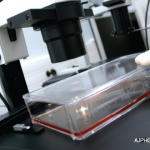To answer this question, 205 patients enrolled in the Juvenile Dermatomyositis Cohort and biomarker study (JDCBS: UK and Ireland) with an IIM who were aged 16 years or older were sent questionnaires for completion. Patients were asked about current disease features and damage, medication use and side effects, as well as education and employment opportunities. In addition, cross sectional and longitudinal data in the JDCBS were used to find outcome predictors.
A total of 84 of the 205 patients (41%) responded to the survey. Of these respondents, the average age was 21.5 years, average disease duration was 11.8 years, and age at onset of disease was 9.2 years.
The survey found that 49 (50%) of respondents reported current myositis and 54 (65%) reported that they still needed to take immunosuppressive medication. Persistent muscle disease affected quality of life outcomes in this cohort
Other findings included career compromise reported by 14 of 50 (28%). Among 47 patients aged 18 to 24, 21 (44.7%) were employed. Overall, the study found that patients in the study were twice as likely to be unemployed as people in similar age groups in the United Kingdom general population (odds ratio of 0.456, 95% CI, 0.24–0.84; P=0.001).
According to Dr. Boros, these findings highlight a need to find “better ways of following up on these patients as disease appears to be ‘longer-lived’ than many physicians realize. However, the possibility exists that patients with ongoing active disease were more likely to respond to the questionnaires.”
“Too many patients are ‘lost’ to medical follow-up so we do not have an accurate idea of long-term medical or social problems,” she said.
Mary Beth Nierengarten is a writer, editor and journalist with over 25 years of medical communications experience.
Miss Any of These Important Sessions?
If you missed any of these important sessions, find them on SessionSelect.



